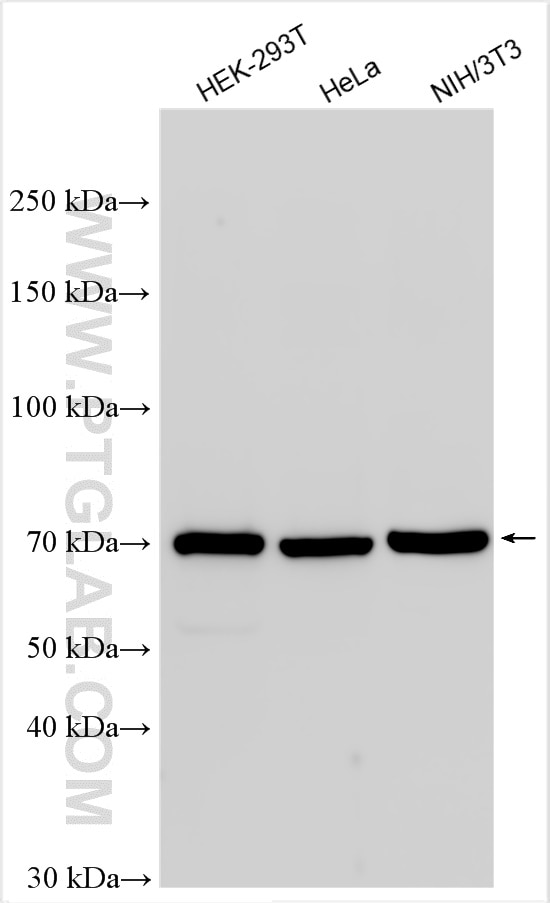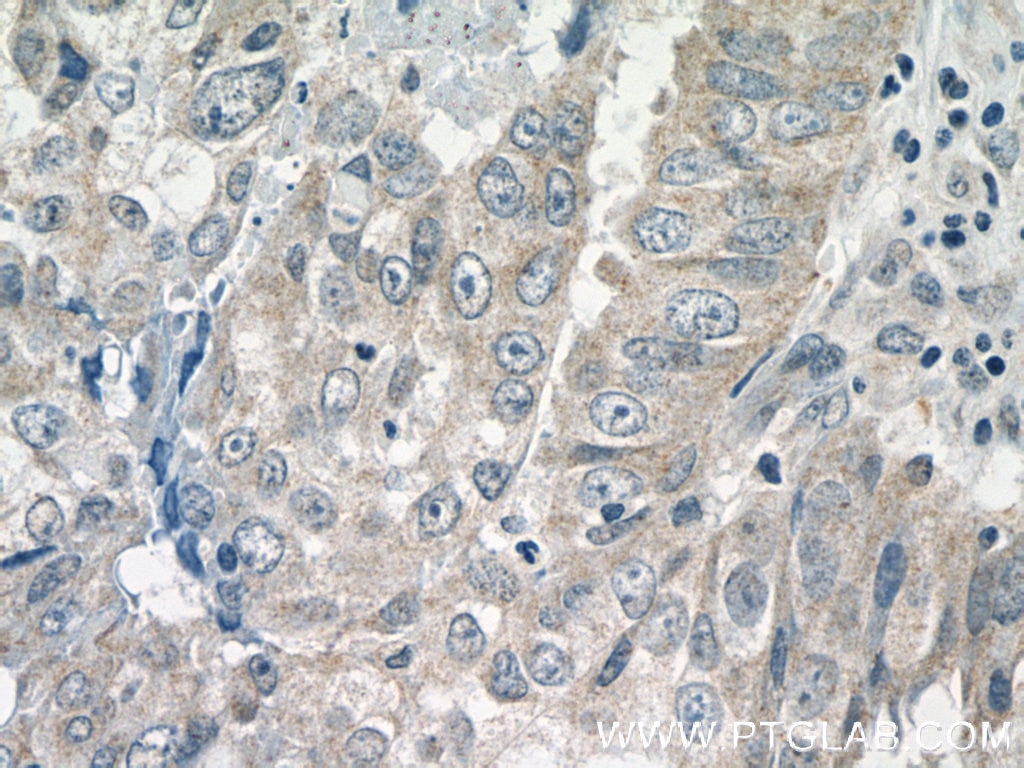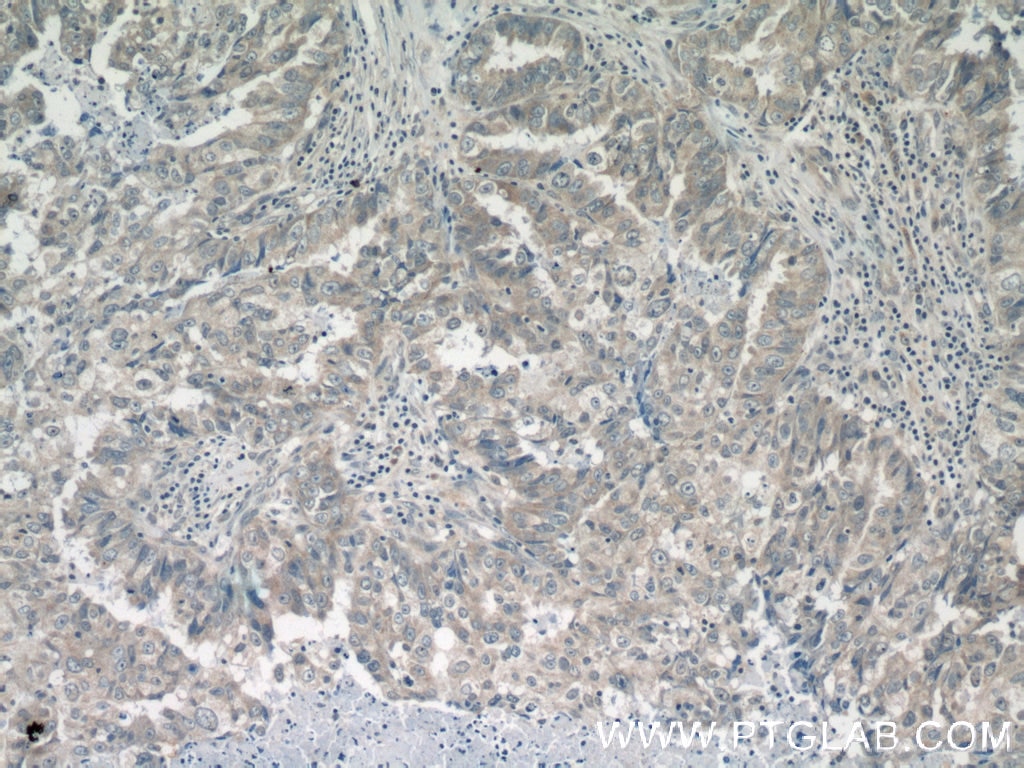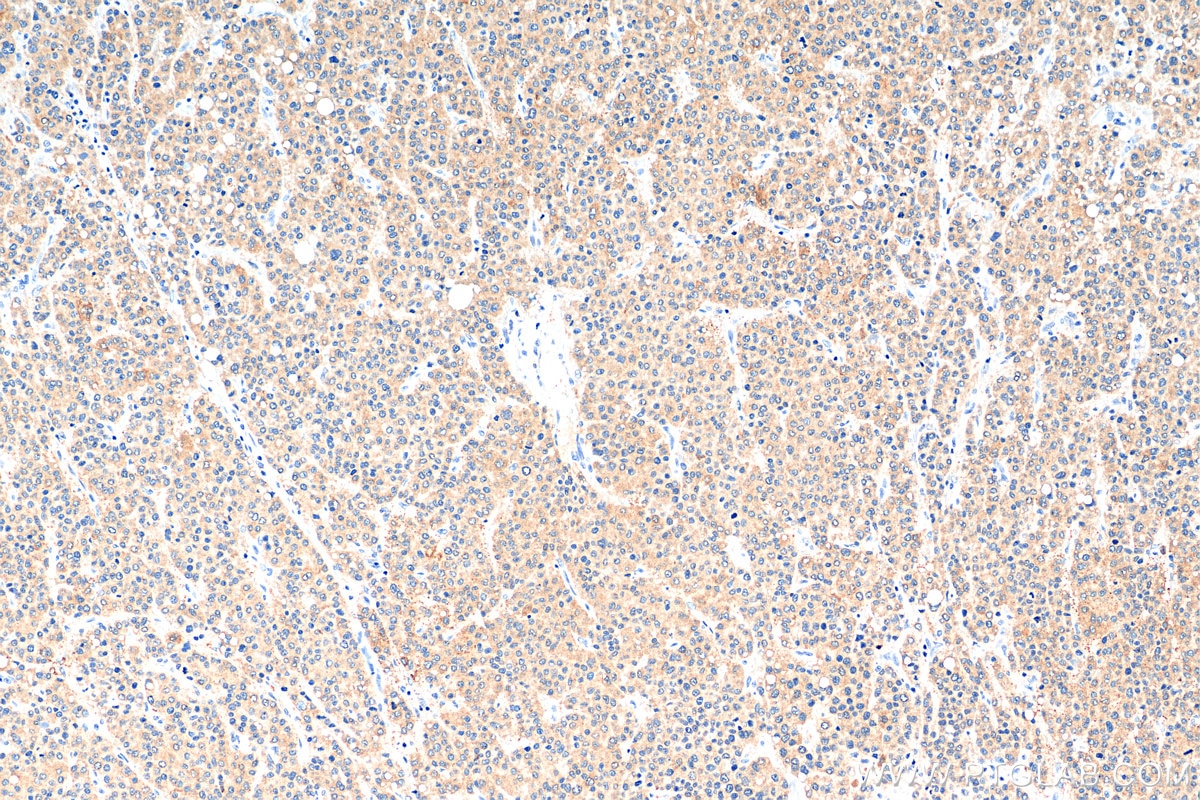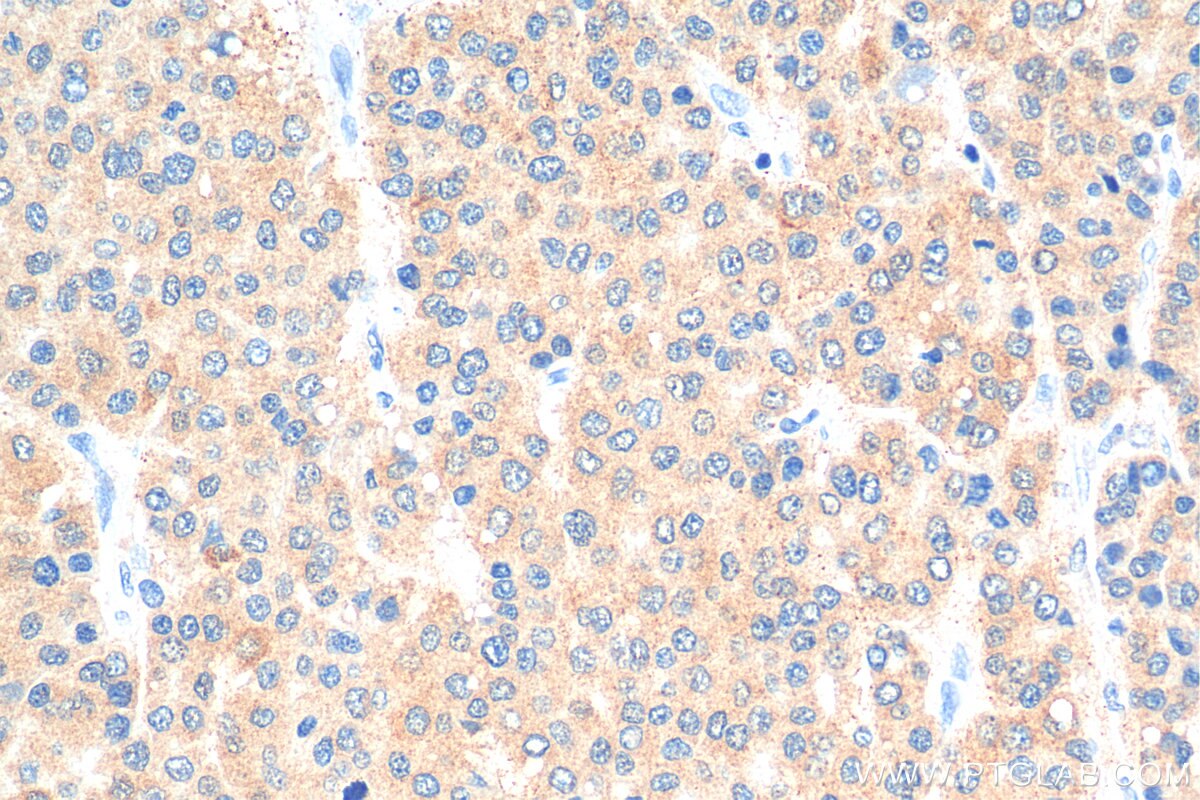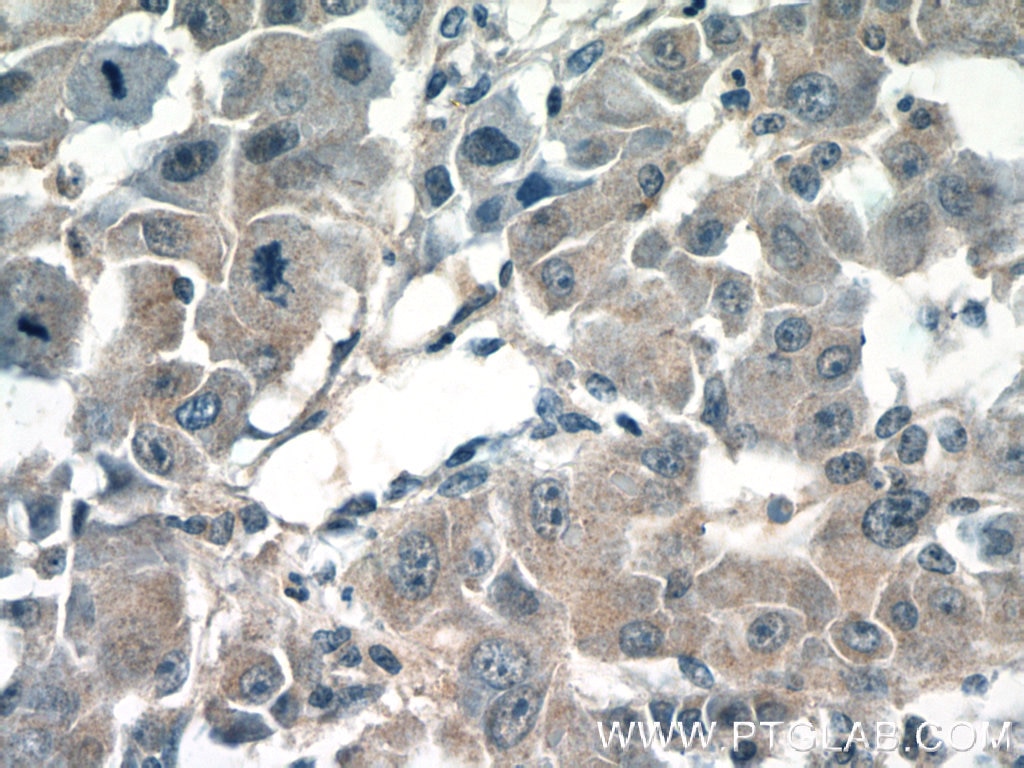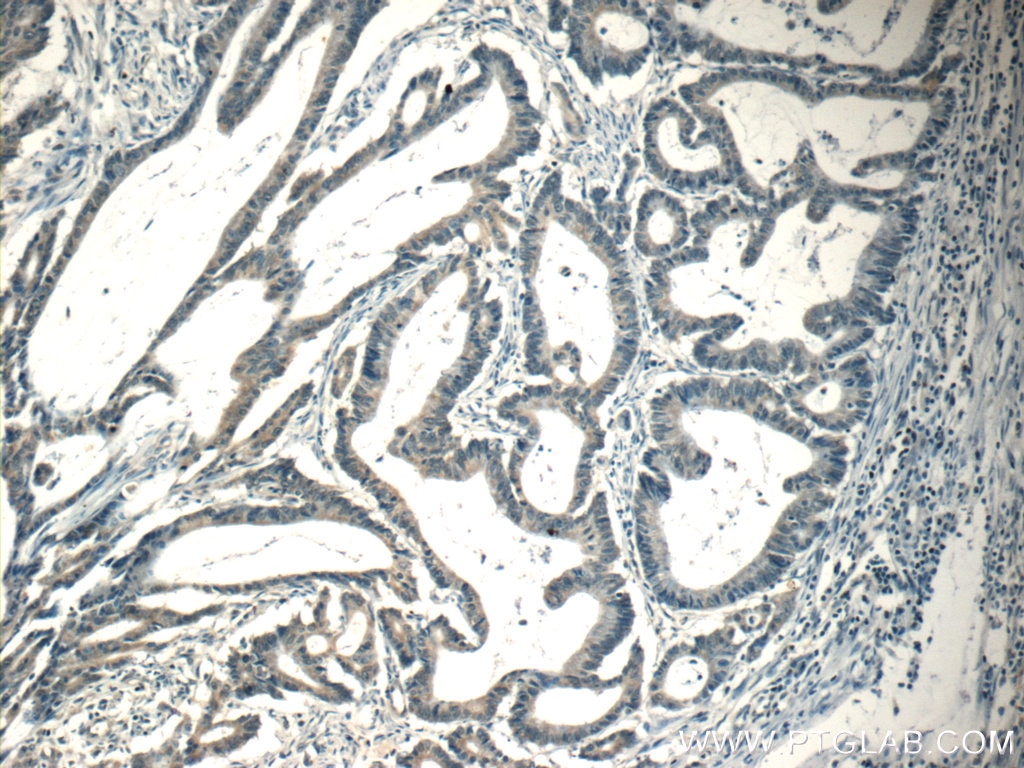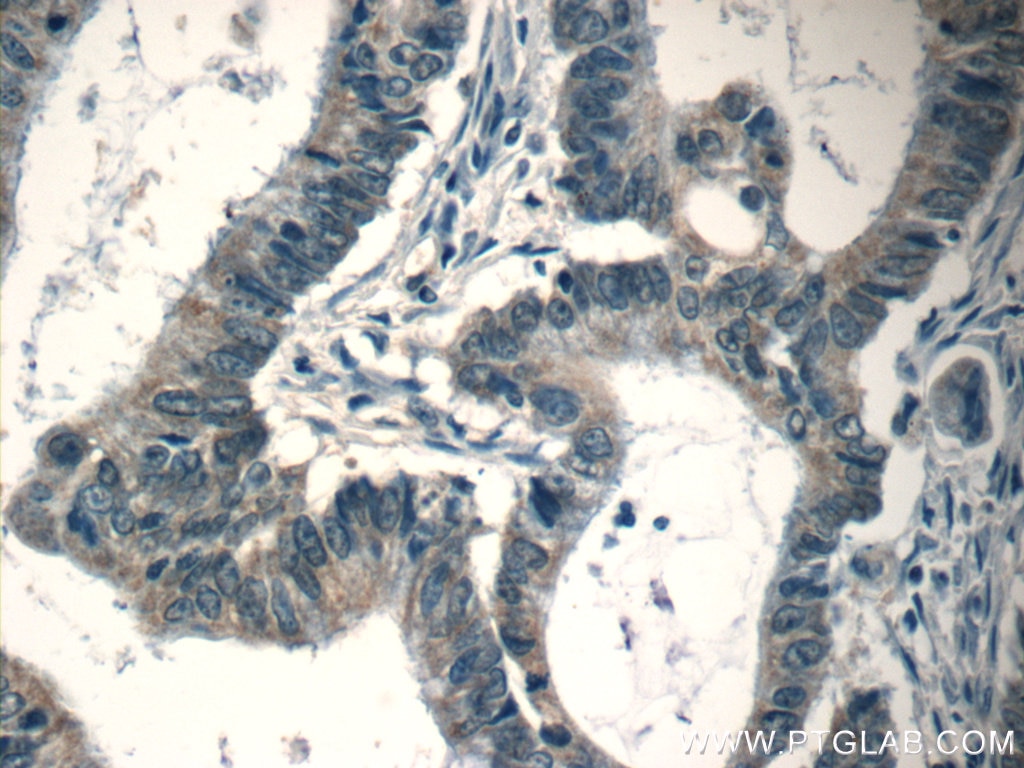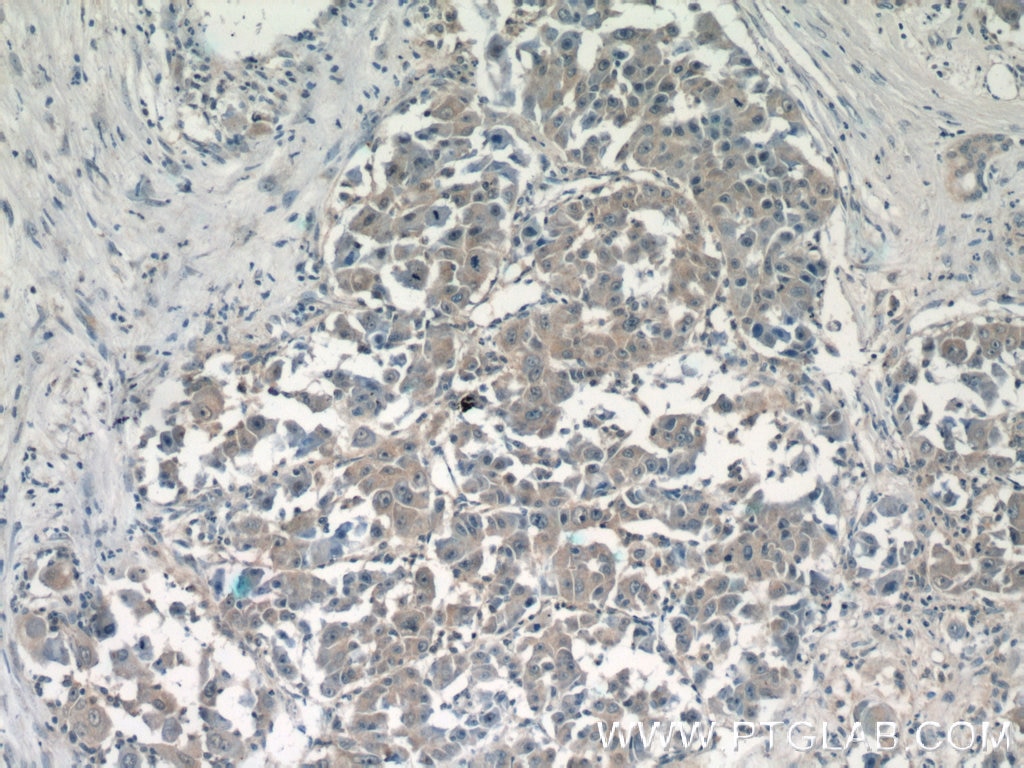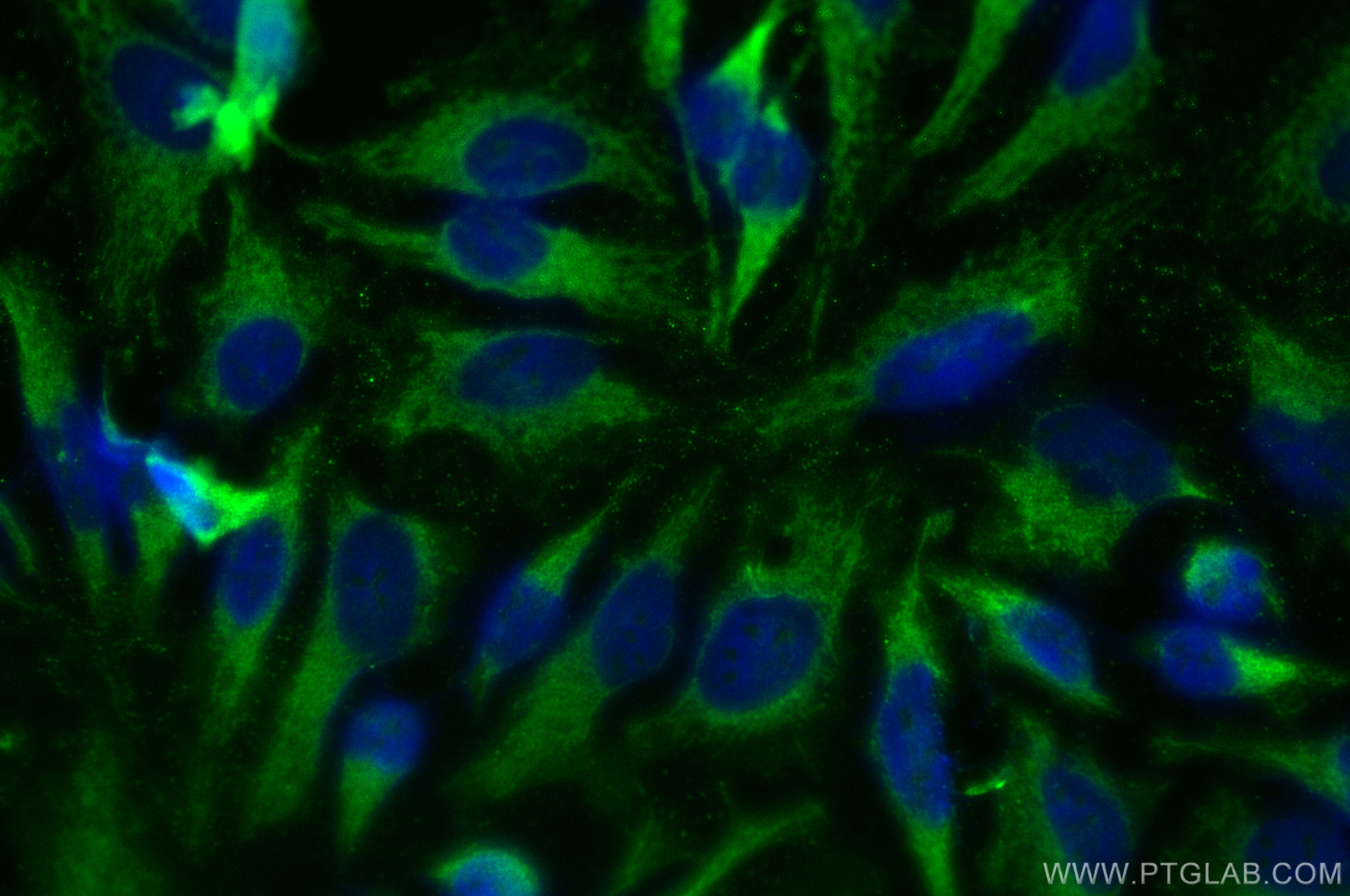Tested Applications
| Positive WB detected in | HEK-293T cells, HeLa cells, NIH/3T3 cells |
| Positive IHC detected in | human liver cancer tissue, human breast cancer tissue, human colon cancer tissue Note: suggested antigen retrieval with TE buffer pH 9.0; (*) Alternatively, antigen retrieval may be performed with citrate buffer pH 6.0 |
| Positive IF/ICC detected in | HeLa cells |
Recommended dilution
| Application | Dilution |
|---|---|
| Western Blot (WB) | WB : 1:1000-1:4000 |
| Immunohistochemistry (IHC) | IHC : 1:50-1:200 |
| Immunofluorescence (IF)/ICC | IF/ICC : 1:50-1:500 |
| It is recommended that this reagent should be titrated in each testing system to obtain optimal results. | |
| Sample-dependent, Check data in validation data gallery. | |
Published Applications
| KD/KO | See 7 publications below |
| WB | See 15 publications below |
| IHC | See 2 publications below |
| IF | See 5 publications below |
| IP | See 2 publications below |
| RIP | See 1 publications below |
Product Information
13274-1-AP targets CPEB1 in WB, IHC, IF/ICC, IP, RIP, ELISA applications and shows reactivity with human, mouse, rat samples.
| Tested Reactivity | human, mouse, rat |
| Cited Reactivity | human, mouse, rat, asterina pectinifera |
| Host / Isotype | Rabbit / IgG |
| Class | Polyclonal |
| Type | Antibody |
| Immunogen |
CatNo: Ag3994 Product name: Recombinant human CPEB1 protein Source: e coli.-derived, PGEX-4T Tag: GST Domain: 188-486 aa of BC035348 Sequence: WDLLEAPKDPFSIEREARLHRQAAAVNEATCTWSGQLPPRNYKNPIYSCKVFLGGVPWDITEAGLVNTFRVFGSLSVEWPGKDGKHPRCPPKGYVYLVFELEKSVRSLLQACSHDPLSPDGLSEYYFKMSSRRMRCKEVQVIPWVLADSNFVRSPSQRLDPSRTVFVGALHGMLNAEALAAILNDLFGGVVYAGIDTDKHKYPIGSGRVTFNNQRSYLKAVSAAFVEIKTTKFTKKVQIDPYLEDSLCHICSSQPGPFFCRDQVCFKYFCRSCWHWRHSMEGLRHHSPLMRNQKNRDSS Predict reactive species |
| Full Name | cytoplasmic polyadenylation element binding protein 1 |
| Calculated Molecular Weight | 486 aa, 54 kDa |
| Observed Molecular Weight | 60-70kDa |
| GenBank Accession Number | BC035348 |
| Gene Symbol | CPEB1 |
| Gene ID (NCBI) | 64506 |
| RRID | AB_2083771 |
| Conjugate | Unconjugated |
| Form | Liquid |
| Purification Method | Antigen affinity purification |
| UNIPROT ID | Q9BZB8 |
| Storage Buffer | PBS with 0.02% sodium azide and 50% glycerol, pH 7.3. |
| Storage Conditions | Store at -20°C. Stable for one year after shipment. Aliquoting is unnecessary for -20oC storage. 20ul sizes contain 0.1% BSA. |
Background Information
CPEB1, also named as CEBP, CPEB and CPE-BP1, contains two RRM (RNA recognition motif) domains and belongs to the RRM CPEB family. It is a sequence-specific RNA-binding protein that regulates mRNA cytoplasmic polyadenylation and translation initiation during oocyte maturation, early development and at postsynapse sites of neurons. CPEB1 regulated translation is a key process involved in INS signaling. This is a rabbit polyclonal antibody raised against residues near the C terminus of human CPEB1.
Protocols
| Product Specific Protocols | |
|---|---|
| IF protocol for CPEB1 antibody 13274-1-AP | Download protocol |
| IHC protocol for CPEB1 antibody 13274-1-AP | Download protocol |
| WB protocol for CPEB1 antibody 13274-1-AP | Download protocol |
| Standard Protocols | |
|---|---|
| Click here to view our Standard Protocols |
Publications
| Species | Application | Title |
|---|---|---|
Nature CPEB1 coordinates alternative 3'-UTR formation with translational regulation.
| ||
Nat Cell Biol Ultrasensitive Ribo-seq reveals translational landscapes during mammalian oocyte-to-embryo transition and pre-implantation development. | ||
Gastroenterology Sequential Functions of CPEB1 and CPEB4 Regulate Pathologic Expression of Vascular Endothelial Growth Factor and Angiogenesis in Chronic Liver Disease.
| ||
Adv Sci (Weinh) Selective Translation of Maternal mRNA by eIF4E1B Controls Oocyte to Embryo Transition | ||
Nat Commun Translational reprogramming in tumour cells can generate oncoselectivity in viral therapies. |

